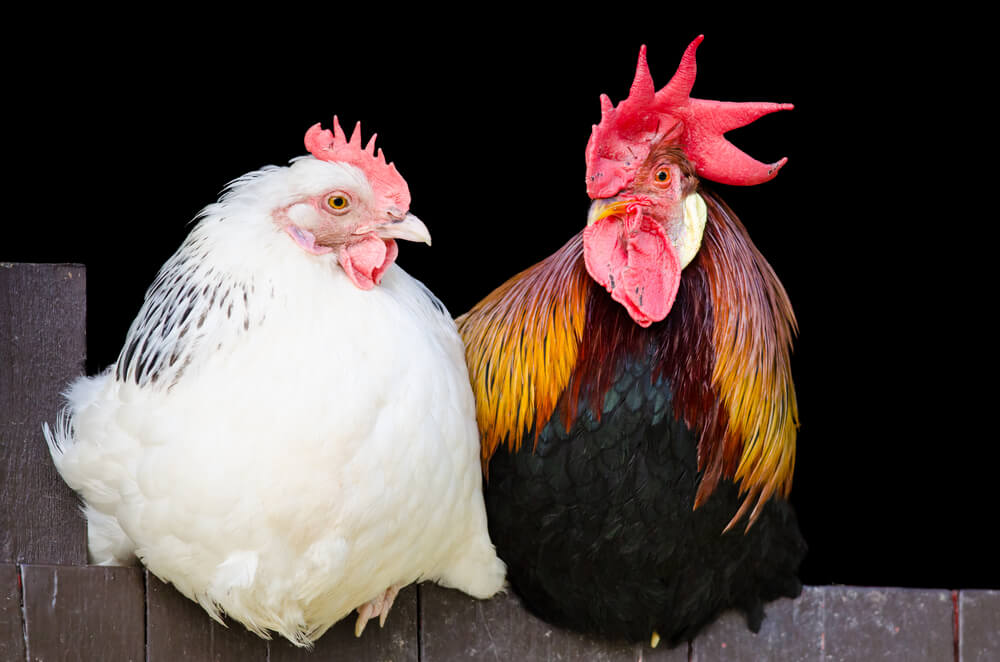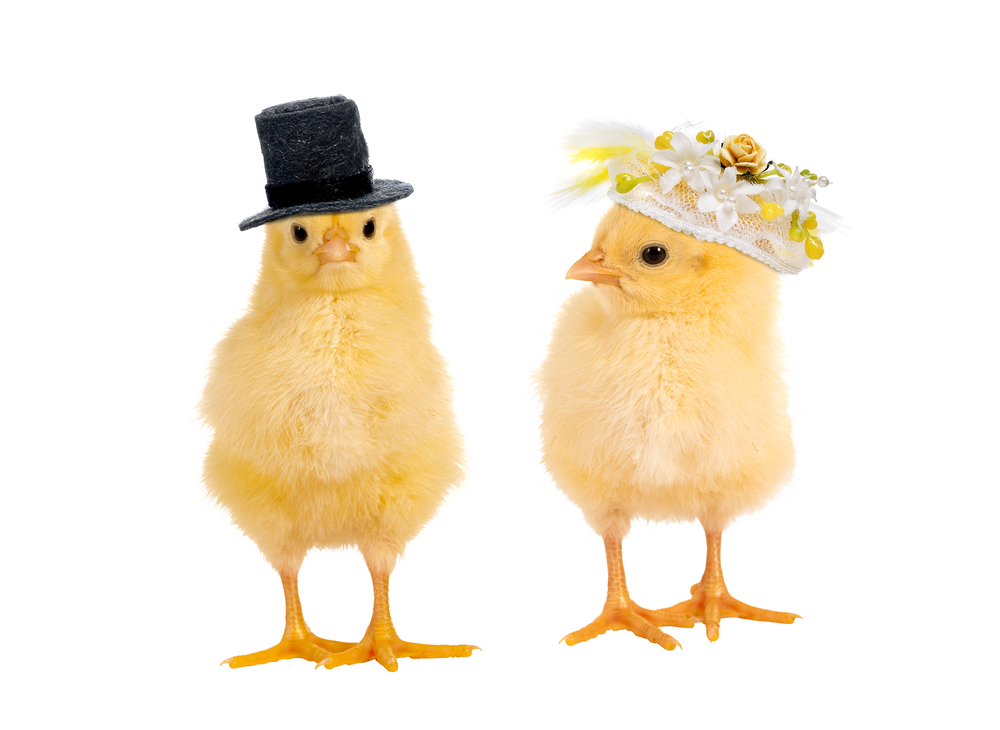A guide for the new chicken parents among us.

So you have a batch of newly-hatched chicks, but don’t know whether they’ll become hens or roosters. While it’s easy to tell the difference between the two when mature chickens strut across your yard, it’s nearly impossible to identify the gender—otherwise known as sexing—of a young chick. You won’t be able to determine with certainty whether they are cockerels (male chickens under one year old) or pullets (female chickens under one year old) until they’re at least 16 weeks old. Here’s what to look for as your chicks mature.
Egg Laying
Of course, whether or not a chicken lays eggs is the obvious way to tell whether you have a hen or rooster. But a hen doesn’t start laying eggs until it’s around six months old, so you’ll have to look at other physical traits to identify the chicken before then.
Combs and Wattles
The comb is the fleshy red crest on top of a chicken’s head. Both sexes have them, but as cockerels mature, they will have larger, brighter and more pronounced combs than the pullets. Roosters will also have larger wattles. This is the elongated fleshy skin that hangs under the beak and helps chickens stay cool during warmer weather.

Photo by Anneka/Shutterstock.
Feathers
There are various feathers on a chicken that can help you determine whether you have a hen or a rooster. Neck feathers, called hackle feathers, are rounder and shorter on a hen. On a rooster, they are longer and pointier. Different breeds have varying tail feathers, but roosters will always have pointier, longer and showier tail feathers, sometimes with several different colors. Roosters have long saddle feathers, which grow on their back down toward their tail. By the time the bird is about three months old, cockerels will have long and pointed saddle feathers. The pullets, meanwhile, will have rounded ones.
Behavior
Roosters have more stamina and strength than female chickens. Hens tend to be more timid, while roosters are always more assertive. Roosters tend to be bossy, even when they’re young. As they get older, you’ll notice that roosters begin to challenge each other, raising their hackle feathers. Plus, they crow the morning cock-a-doodle-do!
Leg Size
The last characteristic to help you identify the difference between hens and roosters is their leg size. Male chickens will have thicker legs than the females. In some breeds, roosters develop pointed, sharp spurs on their legs just above their toes. At six months old, a rooster’s spurs will be less than a third of an inch long. As they age, spurs can grow to reach more than an inch in length. Roosters use spurs to defend themselves. This can be dangerous, particularly if it’s an aggressive rooster. Luckily, there are safe ways to remove them.
Hi its easy just look at the attached image
Roosters….”Plus, they crow the morning” so does our 1 remaining hen!
Also, the rooster that matures first will assert dominance and the remaining cockerels will try to escape the coop/enclosure.
I have several of those. Very docile birds. They panic easily though and will have you startled a-lot, thinking they are being ambushed by a freggin’ bobcat. They come highly recommended for first time chicken owners as they just don’t like to fight. One hilarious thing about my oldest one is my only male guinea is in love with her and follows her everywhere! It’s great! LoL
Yes
I am Gilbert Roel, professor of biology. I saw a taxidermy representation of an adult rooster that had a 12 inch reptilian tail.
i like frankcolin and han